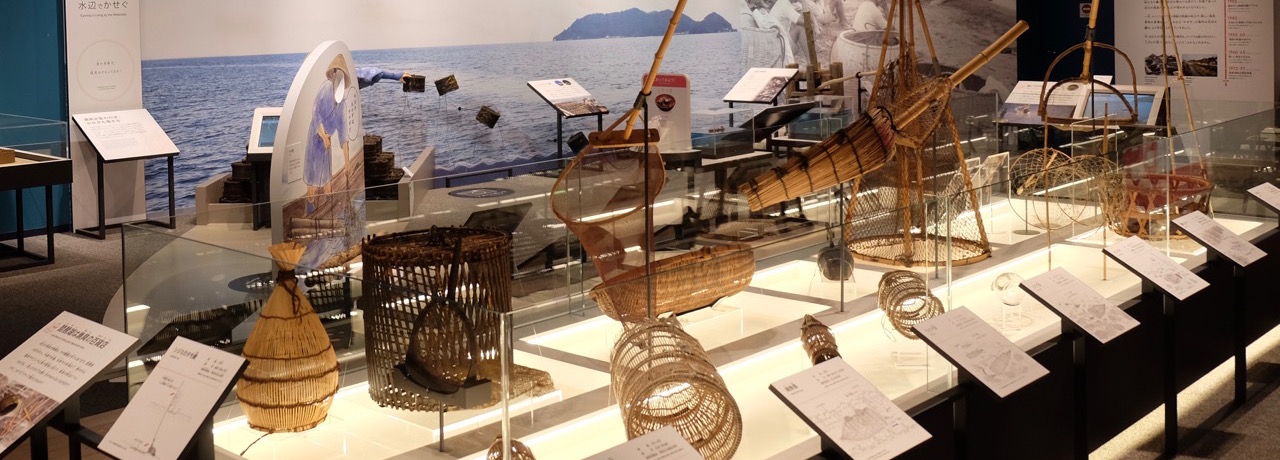
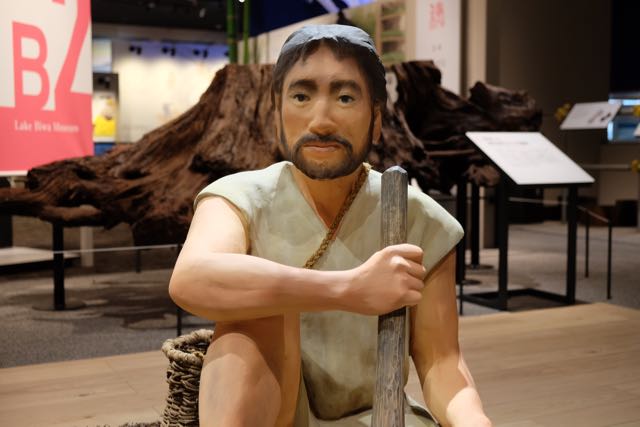
Human History and the Lake: Nature and Our Lifestyles
This exhibition room introduces the history of our relationship with nature, which continues to this day. There is an extensive and varied natural environment in Shiga, including forests, watersides and lakes. Forests, watersides and lakes give people many blessings, and people, in return, have protected and cared for the area in which they live. Over time, people expanded the areas in which they carried out activities. However, living with nature also meant being at risk at times of natural disasters.
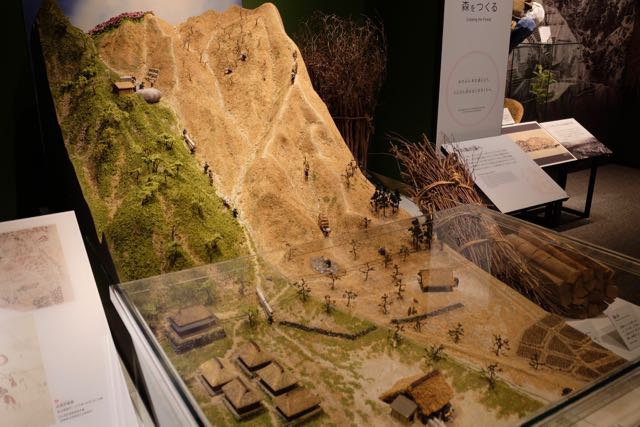
Forest Utilization
The forests that we see today were made into their current form through the activities of many people over the ages. The activities included gathering food from the forest, cutting down many trees for fuel, clearing land for use, and planting trees as lumber for building structures. People’s activities in the forest expanded in such ways, and there were even mountains with very few trees growing on them. In this zone, we take a look at the history of people’s lives in the forest, which shifted with the changes of the times.
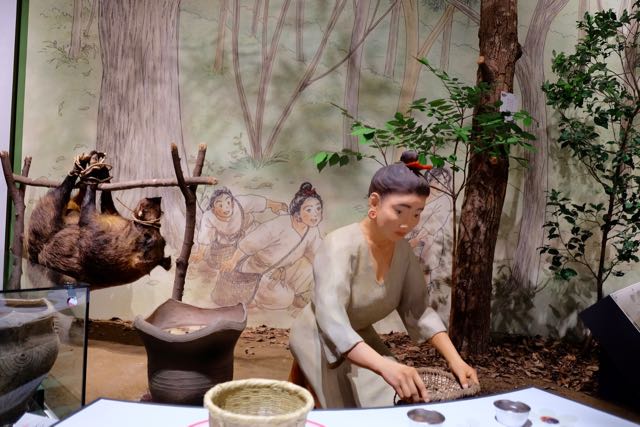
Living in Forests
This is a diorama of a forest of broad-leaf trees, such as evergreen oaks, that sprawled around Lake Biwa about four thousand years ago. A storage pit for nuts, such as red-bark oak acorns, Japanese walnut, and other oak acorns, was found at the Anou site in Otsu City. Acorns, which could be found in the forests, seem to have been an important non-perishable food. On the other hand, tools were made from conifers, such as Japanese cedar and Japanese nutmeg-yew. They were probably preferred because conifers are softer than broad-leaf trees and not hard to cut down, grow straight, and are easier to use for the making of tools. We can see that people made use of the bounties of the forest in their lives in a variety of ways.
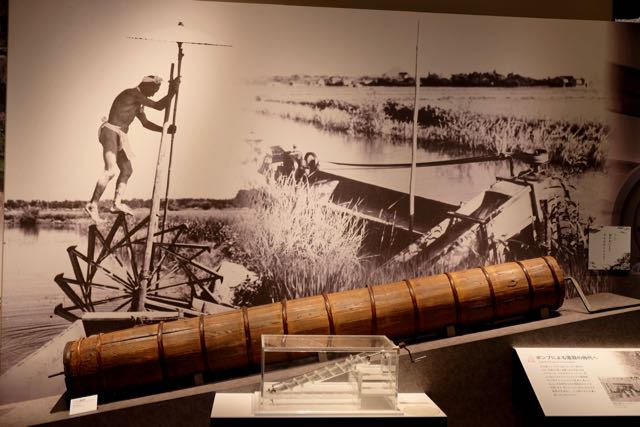
Waterside Lifestyles
Although rich natural surroundings can be found at the waterside, the proximity to lakes and rivers made these locations prone to flooding and sediment disasters. Channels were dug, little by little, to change the course of the water. Rice paddies and fields were expanded in such ways to develop their places of life. People made use of the various bounties of nature. They ate fish, waterfowl, shellfish and other creatures in addition to utilizing reeds and other aquatic plants, algae and mud found in the water. This zone introduces the waterside world, rich with nature, that was a familiar sight only a few decades ago.
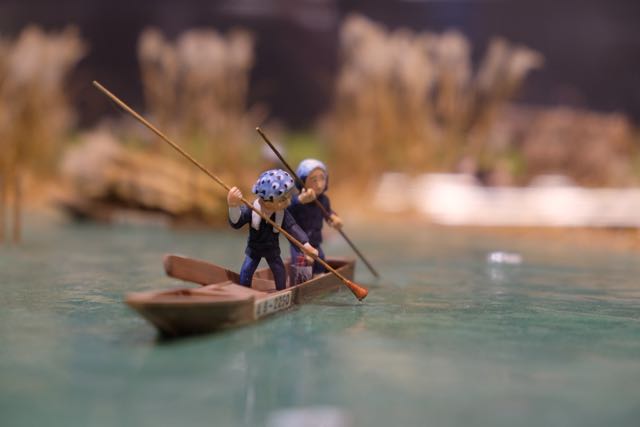
Life by the Waterside
This diorama shows what life was like by the waterside in Minamitsuda-cho in Omihachiman City. The village was located very close to an inner lake. Like islands, reed beds and rice paddies dotted the lake, and a broad channel was created between them. There were no paths by the rice paddies, and people used boats to go to work or transport goods. This diorama was created based on the description provided by a local resident, Mr. Shingoro Nishikawa, who was born in 1923.
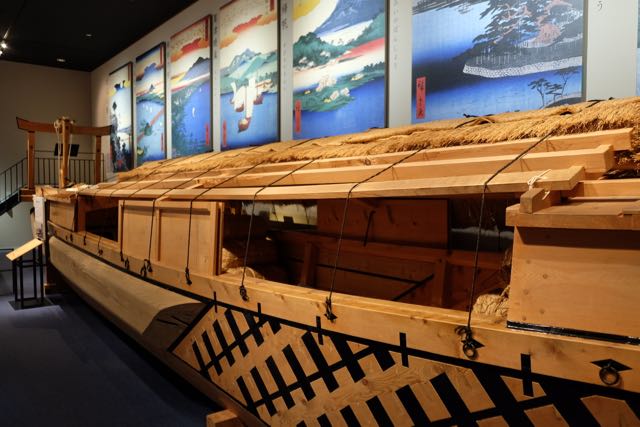
The Functions of the Lake
The lake played an important role as a route for transporting people and goods. Traditional wooden boats, called Marukobune, were used to carry cargo. Steamboats eventually began transporting tourists, making Lake Biwa a sightseeing spot for enjoying the eight beautiful sights of Omi. Meanwhile, new machinery made it possible to pump water from Lake Biwa and the inner lakes, enabling their use as fields. This zone introduces the history of lake use, which eventually led to our current lifestyle.
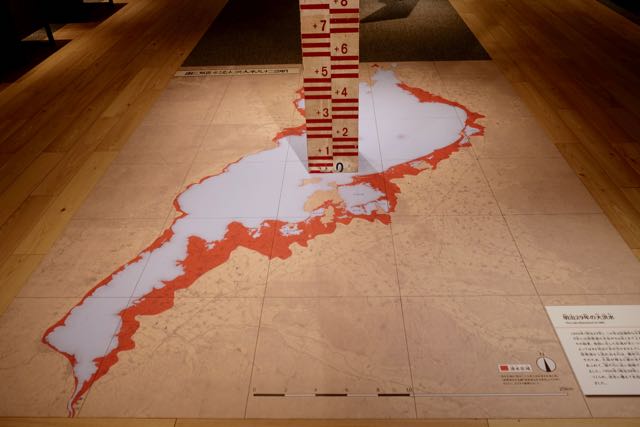
The Great Flood of Meiji
In September 1896, the water level of Lake Biwa rose by three hundred and seventy-six centimeters at its height due to the heavy rains that had continued since August. This exhibit shows how high the water level was at that time. Low-lying areas, to the north and south of the lake, were widely flooded. There were villages where all the homes were flooded, and towns where people evacuated to and lived on the second floor. The Seta River, to the south, was the only river that flowed out of Lake Biwa. Because of this, there were some areas where the flood waters did not recede for eight months.
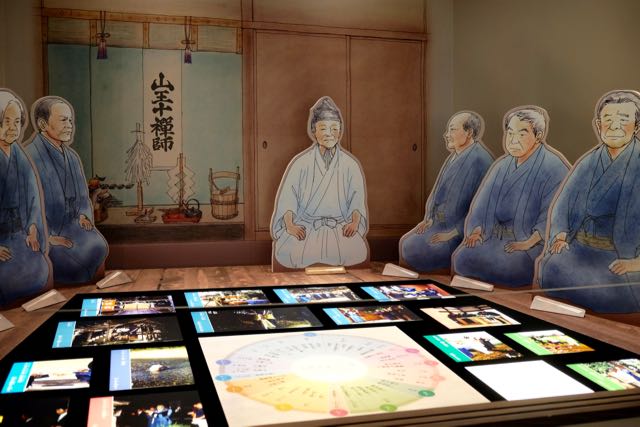
Local Community
At the center of the local communities were shrines and temples, where Shinto gods and Buddhas were enshrined. Traditional events for asking the gods for protection from misfortunes as well as rules for the communal use of the natural surroundings were created. Meanwhile, various creatures still make good use of the natural environment that have been altered by human activity. The relationship between humans and nature will continue into the future.
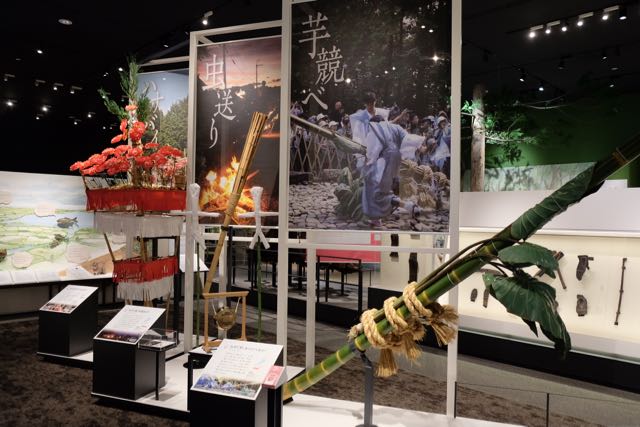
Imokurabe Festival
The god of rice paddies and fields is known as Nogami. Festivals offering sake rice wine, mochi rice cakes, vegetables and fish take place in various locales around Shiga Prefecture. This exhibit shows the offerings made at the Imokurabe, or taro comparison festival in Nakayama, Hino Town. Each September, the village splits up into two groups of people living in the east or west side of the village. They choose the longest taro potatoes harvested that year. At the village Nogami mountain, they compare the harvested taro and see which group has the longer one. The words that are spoken and the gestures that are made when measuring the taro potatoes are the highlight of this festival.
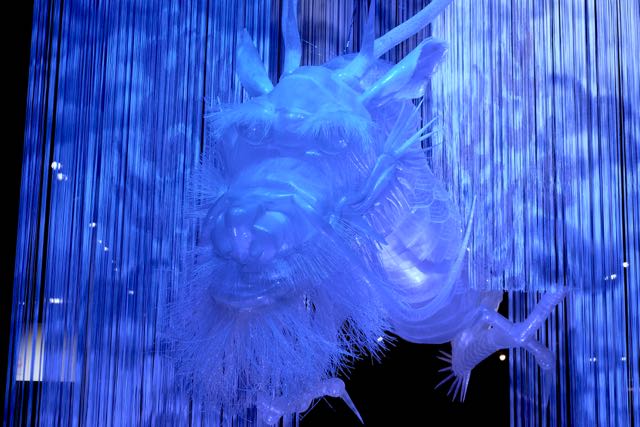
Towards Our Modern Lifestyles
We exist today on the foundation of a past that was built by our forefathers. We are also the partway point between the past and the future. How the natural surroundings will change going forward will depend on how we, of the present, interact with the environment. The dragon that appears in Exhibit Room B symbolizes nature. Perhaps how we see the dragon will symbolize how we will interact with nature. The outdoor exhibits that you see to the left of the exit offer an excellent view of the lake as well as the forests and waterside areas. How does the dragon appear to you right now?
360 Degrees Tour
Take a 360 degrees tour of Exhibition Room B. By using your mouse, or tilting your phone, you can view the exhibition room at any angle.